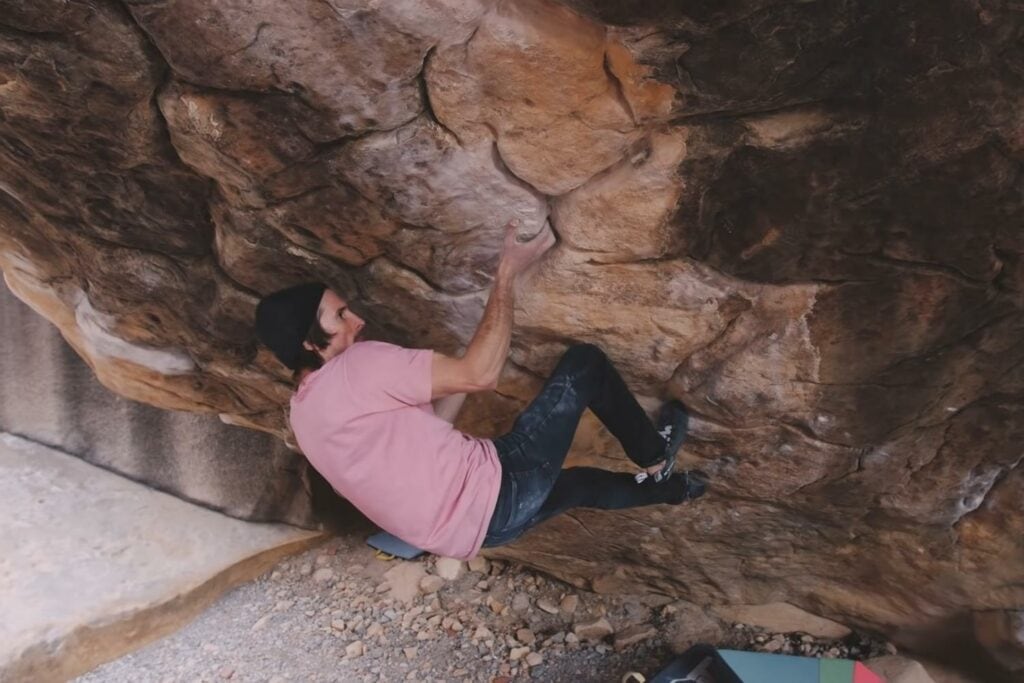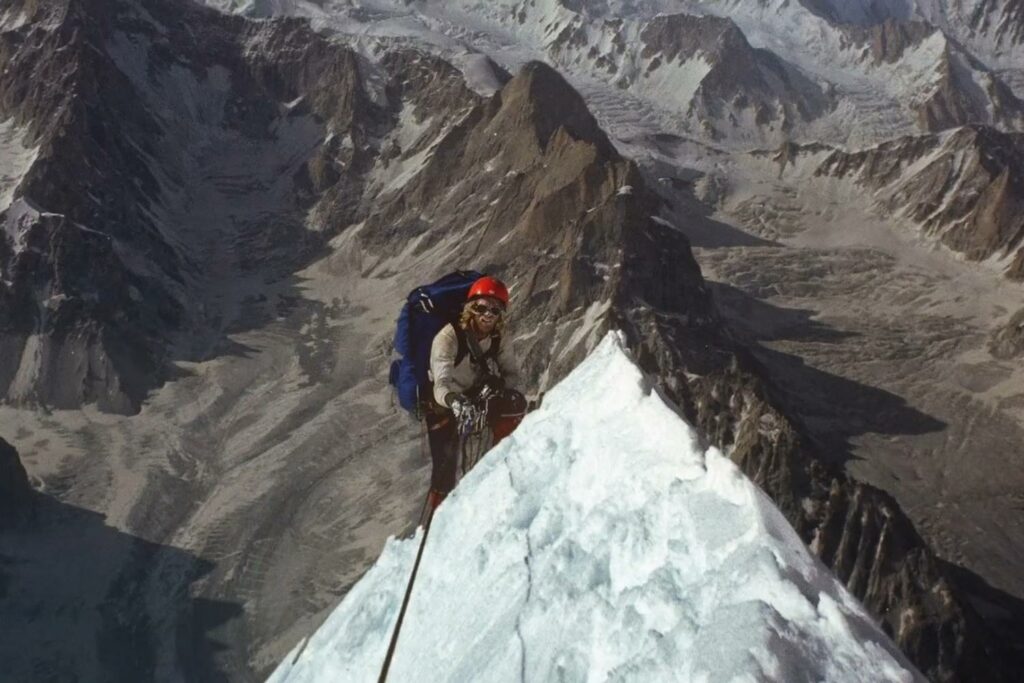The 7 Hardest Climbs in the World (2024)
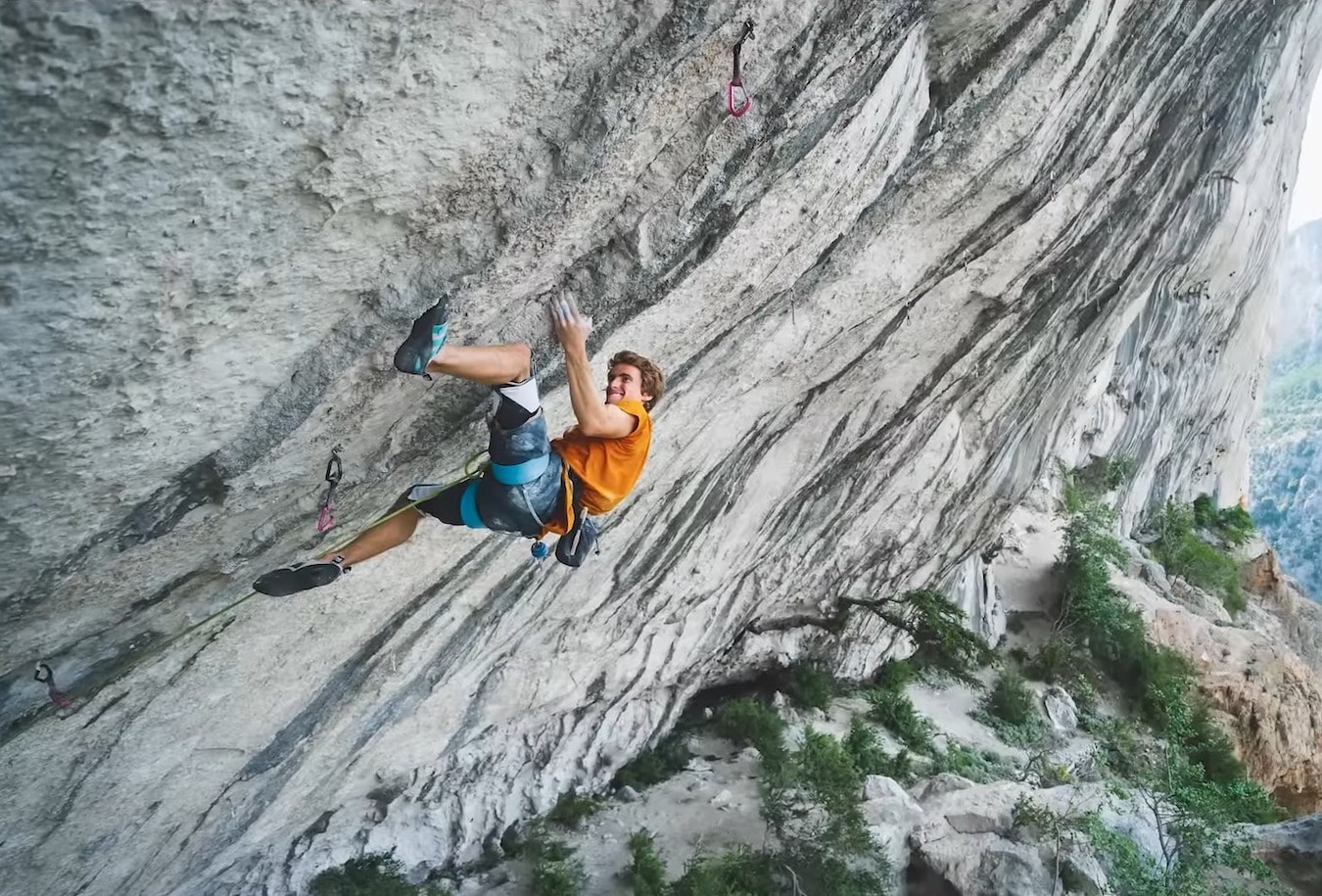
What’s climbing without difficulty? Since the oldest days of our sport, climbers have pushed the envelope, tackling harder and harder climbs, or “grade chasing.” It’s this progression, this desire to keep upping the ante, that’s kept the sport of climbing alive well into the 21st century, taking us to the Olympics, onto the stage at the Academy Awards (Free Solo, The Alpinist), and beyond.
But talking about the hardest climbs in the world isn’t as straightforward as it might seem. A 150-foot sport route like Silence (5.15d) is apples to oranges compared to the 3,000-foot Dawn Wall (5.14d). Both those rock climbs are a world apart from a difficult alpine route on a high-altitude summit like Latok I (23,442 feet).
Climbing is a vast and diverse sport, and climbing grades are just as diverse and complex. So in this article, I’ll break down seven of the world’s hardest routes, each of a different discipline.
How is a Climb Graded?
There is no hard and fast way to grade a route, no machine that analyzes a climb and can judge grades, deciding if it’s 5.10d or 5.11a. Climbing routes are graded by consensus. The first climber to complete a route (i.e., make a “first ascent”) proposes a grade for the climb. With the second ascent, third ascent, and so on, the next climbers to finish the route either a) agree with the proposed grade or b) make grade suggestions to raise or lower the route’s grade.
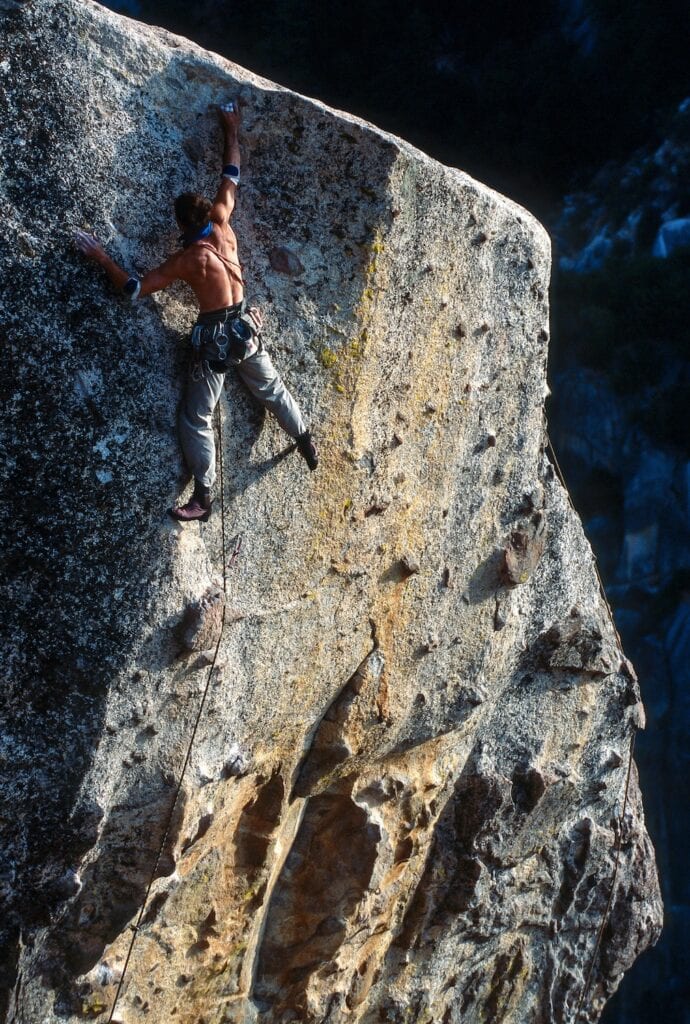
This is part of the reason why grading uber-hard climbs is so… well, hard! The more increasingly diverse group of climbers who have completed a line, the more accurate the grade tends to be. But when talking about extremely elite climbing, you’re dealing with routes that may have only one ascent or perhaps two or three ascents. As a result, these grades tend to be very subjective and depend largely on the climbers who make the route’s first few ascents.
Some places have soft grades (i.e., the climb is easier than the grade suggests). Others have stiff grades (i.e., the climb is harder than the grade suggests). For example, Yosemite rock climbing grades are notoriously stiff (hard), while other regions are known for being soft (easy).
What Makes a Climb Hard?
Like I mentioned in the introduction, there are a variety of factors that make a climb “hard.” At a base level, climbs can be ranked by the hardest grade (check out our complete Climbing Grades Chart to learn more). But the length of the route, conditions, elevation, risk, style, and access will also play a role in difficulty.
Difficulty Grade
At a base level, though, it makes sense to begin categorizing the hardest climbs by their grades. There are different grading scales for different styles of climbing and for different geographic regions. For example, Europeans use a different scale than Americans, and British climbers have a scale all their own as well. Traditional rock climbing and sport climbing have one scale, bouldering another.
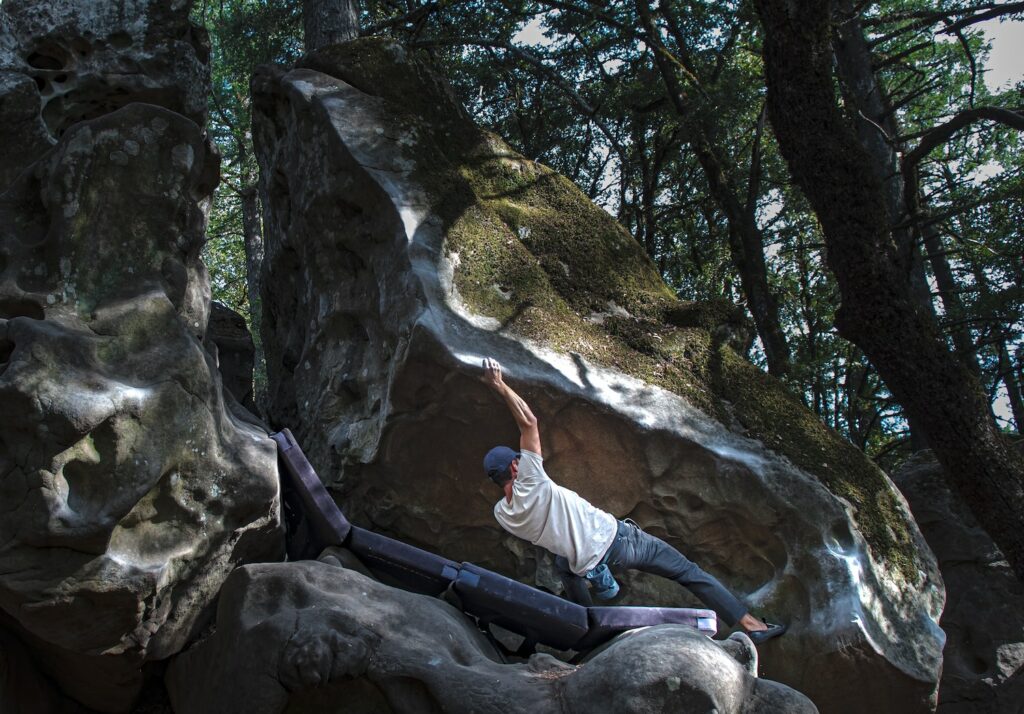
Luckily these scales translate fairly well. For example, a 5.11c in the Yosemite Decimal System (the grading system used in the United States) is roughly a 6c+/7a in the French system (the grading system used in Europe). The same is true for bouldering. A V10 on the Hueco scale (the grading system used in the United States) is roughly 7C+ on the Fontainebleau scale (the grading system used throughout the rest of the world). Again, just check out our extensive chart of climbing grades to see all the comparisons firsthand.
Length
Length plays a role in difficulty in all niches of rock climbing, from bouldering to deep water soloing to trad climbing. Let’s consider hard sport climbing. 100 feet of 5.15c is considered harder than 30 feet of 5.15c. But what about 3,000 feet of 5.14d and 60 feet of 5.15a? Which is harder? The 5.15a is technically harder, but the overall effort to summit 3,000 feet of 5.14d may be greater.
Elevation & Conditions
Altitude can dramatically up the difficulty of a route. When I interviewed Babsi Zangerl and Jacopo Larcher (1) on their third free ascent of Eternal Flame (after Alex and Tomas Huber’s ascent in 2009) earlier this year for Climbing, they spoke to the difficulties of sending 5.13 at 20,000 feet.
“I was not hungry, I couldn’t sleep. I slept no more than three hours each night.”
Babsi Zangerl
Edu Marin, who made the route’s second free climb only a few days before, had a similar experience, spending over 28 days on the wall working the route.
“It was really cold and windy every night. I went many nights without sleeping hardly at all, and it was quite risky because, after two weeks at altitude, I worried I would be too weak to climb the hardest pitches.”
In short, elevation and conditions matter. Is a 5.14a sport route at sea level harder than a 5.13a at 20,000 feet? It’s not an easy answer.
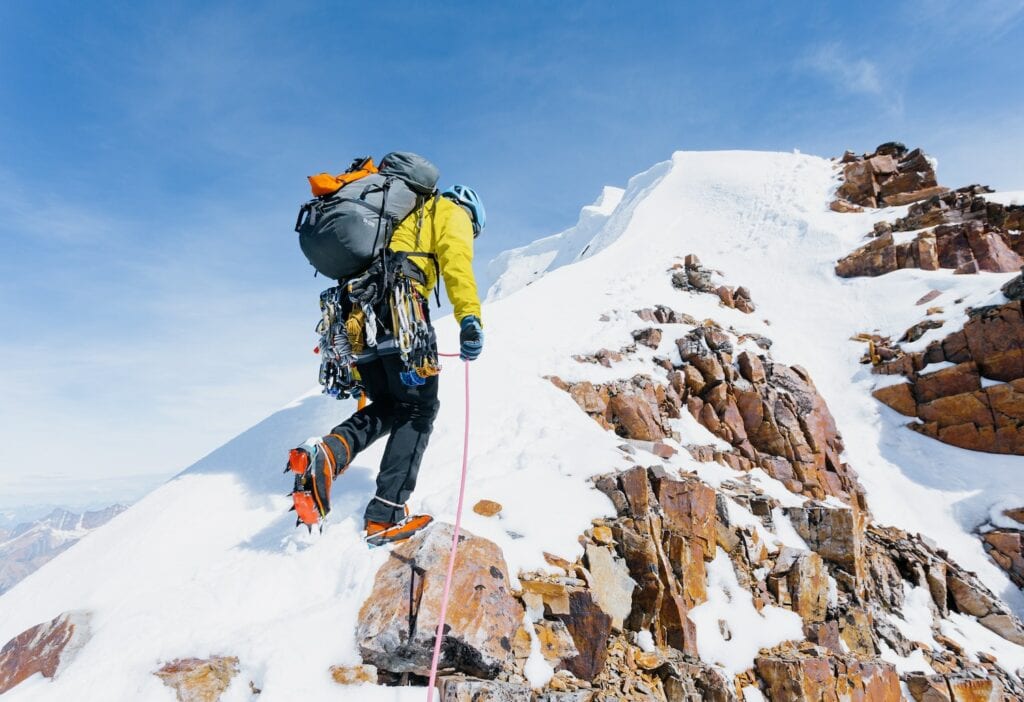
Risk
Take Chris Sharma making hard moves on deep water solos, with a 75-foot drop into the raging ocean below him. It’s a bit more mentally taxing than making hard moves three feet off the ground on a boulder problem or while roped up on the hardest sport climbs. A riskier climb might not require more physical strength, but it will require more mental strength. So risk certainly plays a role in the difficulty of a climb.
Style
Every climber has a different style that works best for them. Some climbers prefer low-angle slabs, with technical, balance-y moves and minimal handholds. Others prefer steep, pumpy roofs, others cracks, others tiny crimps & faces. The style of a route influences its relative difficulty, making it easier for some climbers and harder for others. If it’s just the right style for you, it might be easier than it is for most folks.
Access
Plenty of hard climbs sit at crags just a stone’s throw from a parking lot. But a number of truly revolutionary ascents are miles upon miles from the nearest trailhead. Perhaps they are in a rugged, remote country like Pakistan or Kazakstan, with scarce access to cell reception or logistical support.
Access is important. Think about it like this: If you have to hike for five days just to reach a route, then have to spend your nights sleeping on the cold, hard ground while working on it, wouldn’t that up the difficulty a bit? It’d be much more challenging than climbing a hard route at your local crag, enjoying your soft, warm bed each night and home-cooked meals every day.
The 7 Hardest Climbs in the World
Silence (5.15d), Hanshelleren Cave, Flatanger, Norway – World’s Hardest Sport Climb
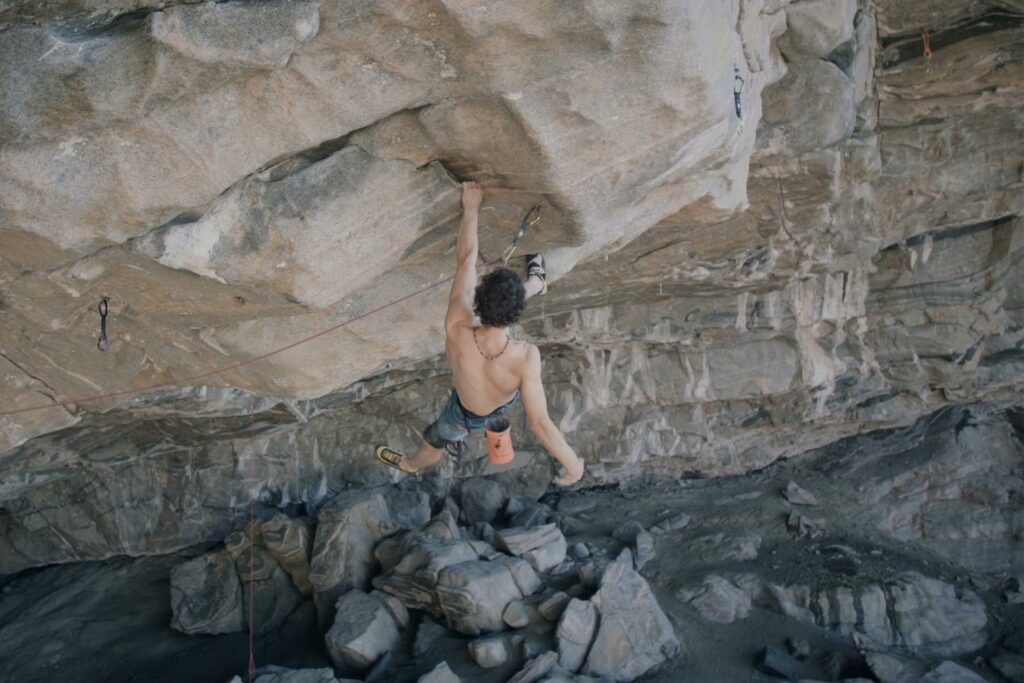
Adam Ondra’s brainchild Silence has gone unrepeated since the Czech wunderkind made the first ascent in September 2017. He proposed 5.15d for this 150-foot roof line, making it the world’s hardest sport climb and first proposed 5.15d. But with Silence not seeing a repeat in the five years since the first ascent, the grade isn’t confirmed. It’s merely a suggestion.
But Adam Ondra isn’t just any sport climber. He’s the best sport climber in the world. The 29-year-old is a veteran of countless iconic ascents, both the first to climb the grade of 5.15c (Change, 2012) and the first to flash 5.15a (Supercrackinette, 2018). Ondra climbed almost all of the hardest sport climbing routes in the world. There are currently only four 5.15c sport routes, and he made the first ascents of the first three of them (Change, La Dura Dura, and Vasil Vasil). So it’s safe to say that if anyone has the track record grade proposed 5.15d, it’s Adam Ondra.
DNA
But Silence isn’t the only climb proposed 5.15d in the world. In May 2022, Sébastien “Seb” Bouin sent his longtime project DNA in France’s Verdon Gorge, suggesting 5.15d. In a subsequent press release, Bouin noted he almost originally proposed a lower grade. He was hesitant to claim 5.15d but ultimately decided a lower grade just wouldn’t have done justice to the route.
“Our sport is beautiful [because] we don’t need judges, we are the judges. It’s beautiful, but at the same time quite hard in this kind of situation—at the very cutting edge.”
He added that grading 5.15d was his way of inviting “the world’s top climbers to come and give DNA a go.” With Bouin’s new line on the scene, Silence no longer stands alone as the penultimate sport route. Nonetheless, it’s definitely one of the hardest sport climbs in the world.
Tribe (ungraded), Cadarese, Italy – World’s Hardest Trad Climb
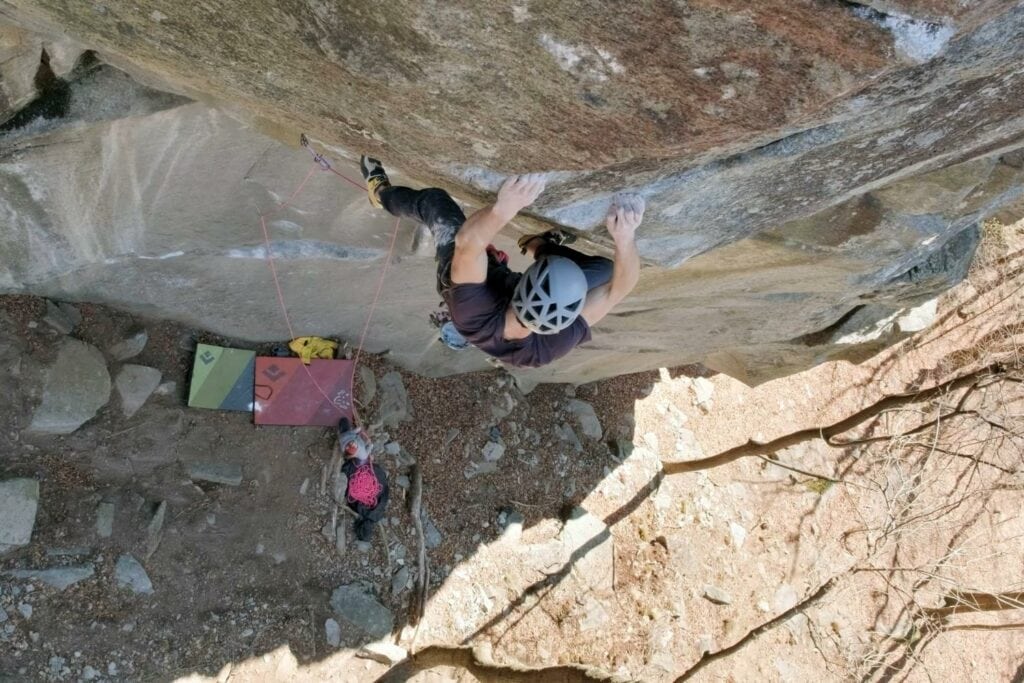
Jacopo Larcher’s Tribe made waves when the Italian established it in 2019. Tribe snakes up a 30-meter arête, through a crux of bad slopers, to a technical finish, all on traditional protection (zero bolts!). After first laying eyes on the line in 2013, it took Larcher three trips and over 50 sessions to finally make the first ascent.
Generally, climbers tend to provide a grade after they make an FA, but Larcher declined. He told Rock and Ice (2):
“I really invested a lot of time in Tribe [and] that’s also why I decided not to grade it. Everyone is wondering how hard it is, but all I know is that for me personally, it’s the hardest thing I’ve done.”
For Larcher, who has sent 5.15 sport routes and many 5.14 trad routes, that’s no small thing. Adam Ondra also famously called Tribe “No doubt, the hardest single-pitch trad route in the world.”
English climber James Pearson made the first repeat in October 2020. He said in a press release that it was easily the hardest climb he’s completed with traditional protection. “For me, Tribe is by far the hardest series of moves I have ever done on a trad route,” he said, “and it’s a real miracle that the thing is actually possible on gear.” Pearson also opted to avoid grading the route, but given both his and Larcher’s assessment that it’s the hardest climb they’ve done on gear, it’s safe to say that Tribe is upper-edge trad. It may be 5.15, the only 5.15 trad climb in the world.
Return of the Sleepwalker (V17), Red Rock, Nevada, USA – World’s Hardest Boulder Problem
Like Silence, Return of the Sleepwalker (V17) isn’t technically the “world’s hardest climb.” There are other problems with proposed grades of V17, namely Nalle Hukkataival’s Burden of Dreams in Lappnor, Finland. Dreams was the first proposed V17 after the Finnish climber took the problem down in September 2016, following over 4,000 attempts and six seasons. There’s also Soudain Seul in Fontainbleu, given slash grade V16/V17, and Shawn Raboutou’s Alphane (proposed V17 but likely lower), among other V17 hopefuls.
However, Return of the Sleepwalker is undoubtedly one of the world’s hardest bouldering problems. It’s also the one that’s generated the most buzz recently, as Daniel Woods just made the groundbreaking first ascent in 2021. The climb, accompanied by a well-received short film, was heralded as a spectacular return to form for the 31-year-old Woods, one of the scene’s veteran boulderers and first ascensionist of a number of V16 problems.
Sleepwalker extended edition
The 17-move Return of the Sleepwalker climb sits just outside of Las Vegas, Nevada. It adds half a dozen moves to the original route, Sleepwalker, a problem set by Jimmy Webb in 2018. “The whole thing gets its difficulty because Sleepwalker is the [boulder] crux,” Woods told Climbing magazine (3) in April of last year:
“You just have to do Sleepwalker pumped. So I was like, ‘You need to have Sleepwalker dialed.’ I probably did Sleepwalker 15-20 times. I did it four times in one session. Then I got it into my head, ‘OK, it’s wired now. I just need to wire the bottom and then it should go.’ I thought it could go fairly quick because I had Sleepwalker so dialed, and soon found out that was not the case.”
Like Ondra and Bouin’s proposed 5.15d sport climbs, both proposed V17 problems are just that… proposed (not confirmed). Neither has seen a repeat, and given their extreme difficulty, it’s possible they won’t anytime soon. But no other climbs are on that level, and Woods and Hukkatiaval are two of the strongest boulderers in the world, so it’s safe to say that if anyone could fairly propose V17, it’s them.
Godzilla (5.15c), Radovljica, Slovenia – World’s Hardest Climb Indoors
Indoor climbing is one of our sport’s newest frontiers, with competitive plastic-pulling recently making the Olympic stage in Tokyo. While most (if not all) strong comp climbers also hone their skills on specific climbs outside, it’s become viable for a climber to almost exclusively focus their career on the indoor wall.
For several years, the title of world’s hardest indoor climb went to The Project, a route at the Klättercentret in Stockholm, Sweden, in 2017, tried by many of the world’s best climbers (unsuccessfully). Only the fact that it was ultimately stripped prevents it from being on this list today. Before it was removed, it was tentatively graded 5.15d, though no one—Adam Ondra, Alex Megos, and Stefano Ghisolfi included—successfully climbed it.
With The Project gone, Godzilla (5.15c), a 90-foot indoor route set at Slovenia’s Climbing Ranch gym last year, may now be the hardest indoor route in the world. The line consists of 65 problems spread out between six bouldery sections, all between V11 and V12, with zero rest opportunities. Domen Škofic, the setter, said in an interview (4) with Climbing magazine last year:
“It’s incredibly hard to clip and hard to chalk up. My best effort for now is that I connected 22 moves, and I’m very happy with that.”
The Dawn Wall (VI 5.14d 2,500 ft) Yosemite National Park, California, USA – World’s Hardest Big Wall
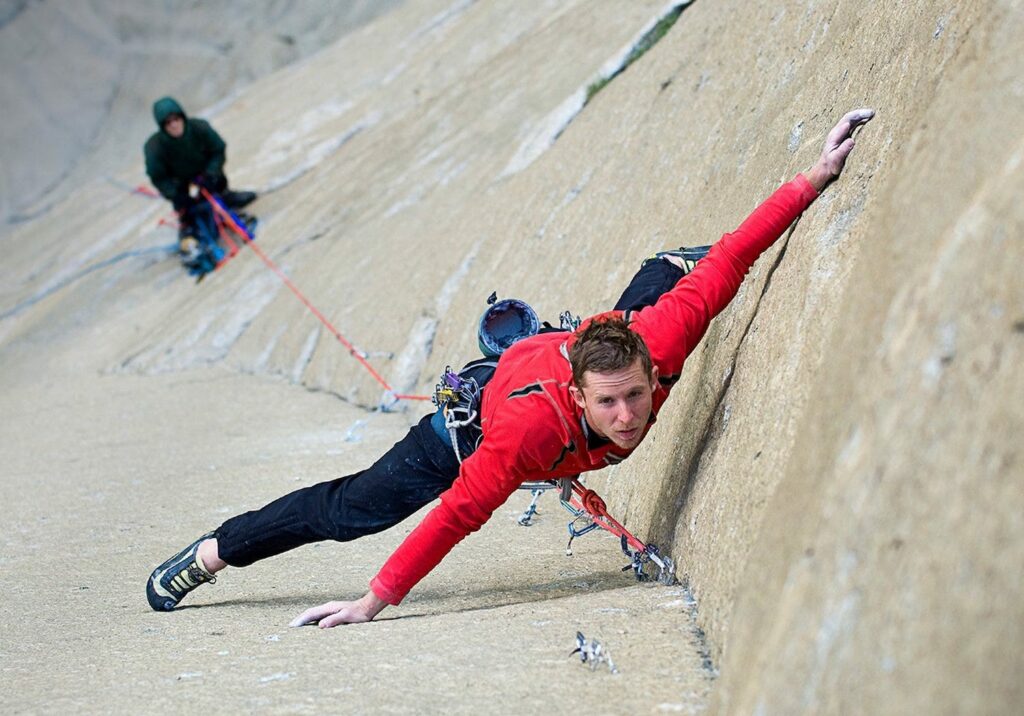
It’s probably no surprise that the Dawn Wall makes this list. Tommy Caldwell and Kevin Jorgeson’s much-publicized ascent of this brutally hard Yosemite big wall became one of the biggest subjects in rock climbing back in 2015, inspiring an award-winning film, shaking hands with then-president Barack Obama, and so on.
At 32 pitches and with difficulties stretching up to 5.14d, there’s no other route in the world with so much high, hard, long climbing. Simply put, it’s one of the world’s most excellent climbs, at just the right level of impossibility to actually be possible. To date, only three climbers have sent the route, Caldwell, Jorgeon, and Adam Ondra, who made a blazing fast repeat in eight days a year later.
Mission to Mars (WI13), Helmcken Falls, British Columbia, Canada – World’s Hardest Ice Climb
Ice climbing has always been a bit trickier than other disciplines because ice is an ever-changing medium. Ice forms differently each year, so it’s always a slightly new experience. However, the 460-foot Helmcken waterfall is undoubtedly home to some of the world’s hardest ice routes, with the waterfall’s surrounding spray forming spectacular ice stalactites.
Three routes at the cutting edge, the first-ever WI10, WI11, and WI12, were all sent here. Then, in 2020, Tim Emmett and Klemen Premrl made the world’s first ascent of a proposed WI13, Mission to Mars. This 120-foot pitch is the steepest line in the surrounding amphitheater, with a crux right at the very end.
North Ridge, Latok I (23,442 ft), Karakorum, Pakistan – World’s Hardest Alpine Climb
Difficulty in alpinism sits on a much broader spectrum than other climbing disciplines. Indeed, altitude, weather, access, and other difficulties play a bigger role here than in single-pitch sport climbs. So many climbs could arguably take the cake here, but I’m going with the North Ridge of Latok I (23,442 ft) because there’s probably no climb in the world that’s so captured the climbing imagination.
First climbed via the South Face in 1979 by a six-man Japanese team, Latok I is the highest peak of a small cluster in Pakistan’s Panmah Muztagh. Its North Ridge was long considered the “holy grail” of alpinism. In 1978, a crack team of Jim Donini, Jeff Lowe, Michael Kennedy, and George Lowe made a brutal attempt, turning back just a few pitches shy of the top.
Kennedy penned a fantastic article (5) for Rock and Ice about the harrowing experience.
“Hundreds of unnamed and unclimbed peaks stretched out toward the horizon. There was not a sign of life anywhere on the glacier a mile-and-a-half below our feet … [W]e each proclaimed some variation of the same sentiment, that this was the best climb we’d ever been on.”
An elusive climb
Today, close to 50 years later, the peak has never been summited via the North Ridge, though many have tried. Russians Alexander Gukov and Sergey Glazunov finished the North Ridge proper in 2018 (6). However, they were unable to traverse the 1,000-foot-long ridge to the peak’s highest point (according to Gukov), and Glazunov fell to his death high on the route while rappelling.
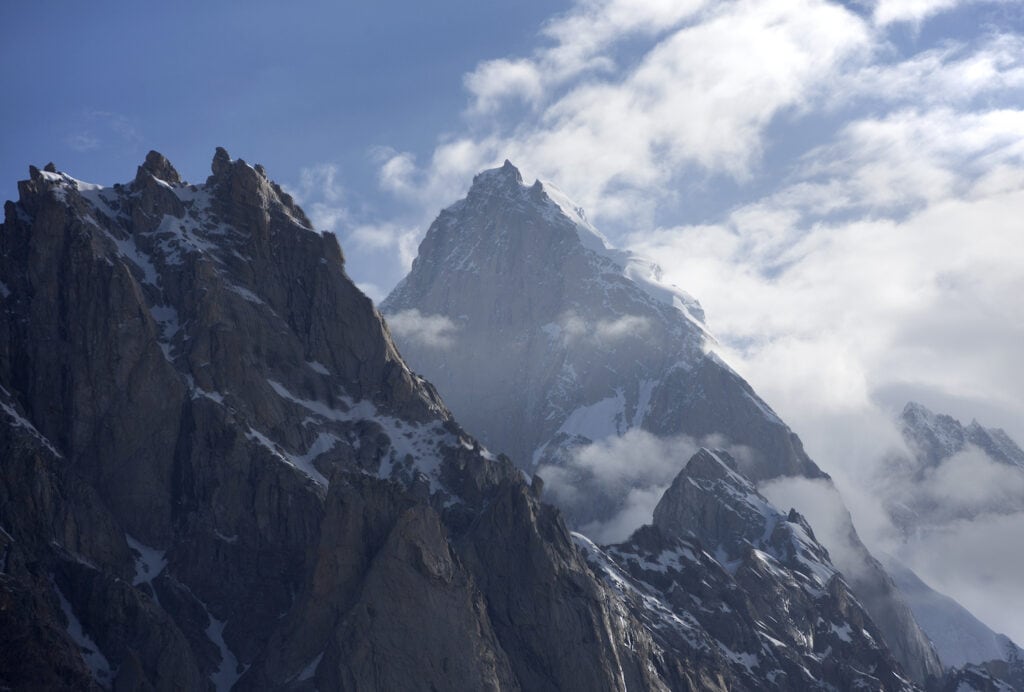
British climber Tom Livingstone and Slovenians Aleš Česen and Luka Stražar made the peak’s second ascent the same season. Many news outlets reported they did so climbing the North Ridge, but it ultimately came out that they actually only climbed two-thirds of the North Ridge, traversing south for the final portion.
Despite all the advancements of modern climbing gear and apparel, all the exceptional athletes, all the difficult routes & high-level ascents, nearly half a century down the line, a climb of Latok I via the North Ridge remains elusive. There could be more difficult remaining climbs in the alpine, but there’s nothing quite like the North Ridge on Latok I.
Cover photo: Seb Bouin on DNA, © Lena Drapella.
Check this out next: The 11 Best Climbing Spots in Europe
References
Jacopo Larcher and Babsi Zangerl on Keeping the “Eternal Flame” Burning
Owen Clarke, Climbing, Sep 2022 (retrieved on 11/04/2022)
https://www.climbing.com/news/babsi-zangerl-jacopo-larcher-climb-eternal-flame/
Interview: Jacopo Larcher on Establishing “Tribe,” Possibly World’s Hardest Trad Climb
Michael Levy, Rock & Ice, Mar 2019 (retrieved on 11/04/2022)
https://www.rockandice.com/climbing-news/interview-jacopo-larcher-on-establishing-tribe-possibly-worlds-hardest-trad-climb/
Daniel Woods Spent a Month Alone in the Desert to Send the First US V17, He Came Back a Different Person
Kevin Corrigan, Climbing, Apr 2021 (retrieved on 11/04/2022)
https://www.climbing.com/news/interview-daniel-woods-talks-return-of-the-sleepwalker-v17/
Is This the World’s Hardest Indoor Route?
Delaney Miller, Climbing, Nov 2021 (retrieved on 11/04/2022)
https://www.climbing.com/places/is-this-the-worlds-hardest-indoor-route/
No Summit No Cry
Michael Kennedy, Rock & Ice, Aug 2018 (retrieved on 11/04/2022)
https://www.rockandice.com/snowball/no-summit-no-cry/
Latok I: The North Ridge
Alexander Gukov, American Alpine Club, 2019 (retrieved on 11/04/2022)
https://publications.americanalpineclub.org/articles/13201215272

